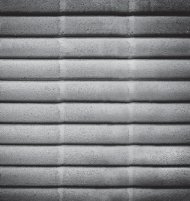Undergrad_Book_16-18_Pge_View_Print_no print marks_compressed
You also want an ePaper? Increase the reach of your titles
YUMPU automatically turns print PDFs into web optimized ePapers that Google loves.
Selected Projects 20<strong>16</strong>-<strong>18</strong><br />
Figure 1. Gel showing the results of degenerate PCR searching for SIAT7 in springers damselfish (chrisyptera springeri, CSP) and clarks<br />
clownfish (amphiprion clarkia, ACL) ge<strong>no</strong>mic (gDNA) and skin cDNA samples<br />
92<br />
their transcriptomes to see if it was present or <strong>no</strong>t.<br />
If SIAT7 was present, I would get a gene sequence<br />
from the transcriptomes.<br />
To do this a reference gene was identified from<br />
the bicolor damselfish (Stegastes partitus;<br />
XP_008298796.1). This reference gene was used to<br />
find matching sequences from the transcriptomes<br />
of the study species using Local BLAST. I found that<br />
SIAT7 appeared in all species transcriptomes that<br />
were checked. From this, I could say that SIAT7 is<br />
found in both symbiotic and <strong>no</strong>n-symbiotic species<br />
of fish. However, the specific tissue or tissues it is<br />
expressed in and to what extent was <strong>no</strong>t k<strong>no</strong>wn from<br />
this information.<br />
After going back to look at the specific gene sequences<br />
that were used to make the primers, there<br />
was evidence that SIAT7 across these species may<br />
be paralogs. Paralogs are genes that have evolved<br />
by duplication events, resulting in two copies of the<br />
gene in different locations of the ge<strong>no</strong>me. After<br />
duplication, these copies evolve independently, accumulating<br />
different mutations. After a long period,<br />
these paralogs may still encode for the same protein<br />
but can have very different DNA sequences. This is<br />
interesting to <strong>no</strong>te because it could be evidence that<br />
clownfish symbiosis caused this duplication event to<br />
occur. We found paralogs in the Clarks clownfish but<br />
<strong>no</strong>t in the other three species we tested, which were



